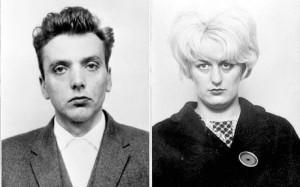I feel rested and ready for the new term of my course following my return from holiday having enjoyed the sunshine in the south of France. I always find the power of now to be easier to achieve in hot and sunny climates, where every day feels like a holiday.
It seems that there are many unpleasant news stories around at present from hit and run cases involving children visiting their sweet shop to unsuspecting pensioners being duped of their savings by con-men posing as utility inspectors. It is a constant ethical challenge for me when I assess which type of client I would refuse to work with. Some colleagues draw the line at paedophiles whilst others refuse to see murderers. I am reassessing these ethical issues after watching some disturbing television documentaries on serial killers.
Endgames of a Psychopath
The first, Endgames of a Psychopath, concerned the life and times of one Ian Brady. Ian Brady was born in a Glasgow slum in 1938, to single mother Peggy Stuart and he never knew his father’s identity. Known as the Moors murders the crimes were carried out by Ian Brady and his accomplice Myra Hindley between July 1963 and October 1965. The murders took place in an area now known as Greater Manchester, North West England. The victims were five children aged between 10 and 17, Pauline Reade, John Kilbride, Keith Bennett, Lesley Ann Downey and Edward Evans. At least four of whom were sexually assaulted. These crimes became known as the Moors murders because two of the victims were discovered in graves dug on Saddleworth Moor. A third grave was discovered there in 1987, over 20 years after Brady and Hindley’s trial in 1966. The body of a fourth victim, Keith Bennett, is also suspected to be buried there, but despite repeated searches it remains undiscovered.
The killer’s mental health advocate Jackie Powell was interviewed in the programme and she talked at great length about her relationship with Brady. Keith Bennett’s mother, Winnie Johnson, died at the weekend oblivious that Brady was apparently ready to reveal the whereabouts of the remains of her son. Quite apart from realising the horror suffered by Winnie Johnson for the past 50 years what also struck me whilst watching Endgames of a Psychopath was the dilemma of seeing a client such as Ian Brady in a therapeutic environment whilst striving for the unconditional positive regard. How could I remain open minded, patient, non judgemental and empathic with such a client?
I felt challenged by assessing how I could stay committed to unconditional positive regard knowing the horror of his past
Similar concerns were raised in my mind when I watched last night’s programme on serial killer Colin Ireland. This individual tortured and then killed 5 gay men in 1993 in London and died in prison earlier this year. His victims were Peter Walker, Christopher Dunn, Peter Bradley, Andrew Collier and Emanuel Spiteri. In May 2007, a report by the independent Lesbian Gay Bisexual Transgender Advisory Group found that the Metropolitan Police inquiry was ‘hampered by a lack of knowledge of the gay scene in London and the special culture of S&M bondage’.
In the programme last night there was an opportunity to witness his total lack of remorse as he chillingly described how he killed his victims in a confession captured on video by the police. Again, I felt challenged by assessing how I could stay committed to unconditional positive regard knowing the horror of his past. However, when discussing these concerns previously with a psychiatrist, she pointed out that it can be further compounded when a violent client can even be directing their aggression against you in the consulting room.
issues spanning a wide pendulum
The crucial issue here is where does it stop if as therapist we begin to lay down conditions on who we will see. Invariably clients present with issues spanning a wide pendulum. So, whilst at one extreme end of the pendulum of violence, for instance, there may be multiple murders whilst at the other end there may be a history of street brawling. Where does one draw the line if you start laying down conditions on who you see? This will always be a personal matter for each individual. It is perhaps crucial that we have a robust awareness of transference and counter-transference issues and to be as knowledgeable as possible about our own areas of emotional vulnerability and unresolved emotional issues.
Resources
Motivating treatment-resistant clients in therapy
Safety issues for counsellors who work with violent clients
Therapeutic issues for counsellors
Experiencing a horrific crime can be hugely traumatic
Living with and creating a spirituality of loss in a forensic context

really interesting question… i think it’s easy to assume we’re “cool” with all sorts of clients when we first go into training. it’s become clear to me that this isn’t always the case once histories begin to emerge. and as you point out, it’s critical for the healing to take place for their to be both authenticity and positvity in the relationship. not easy!